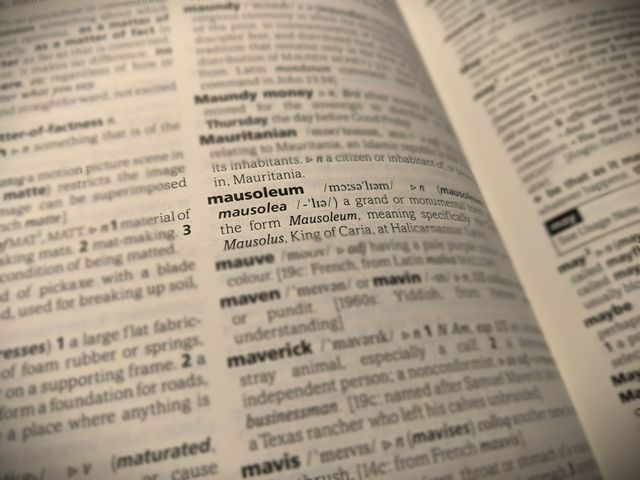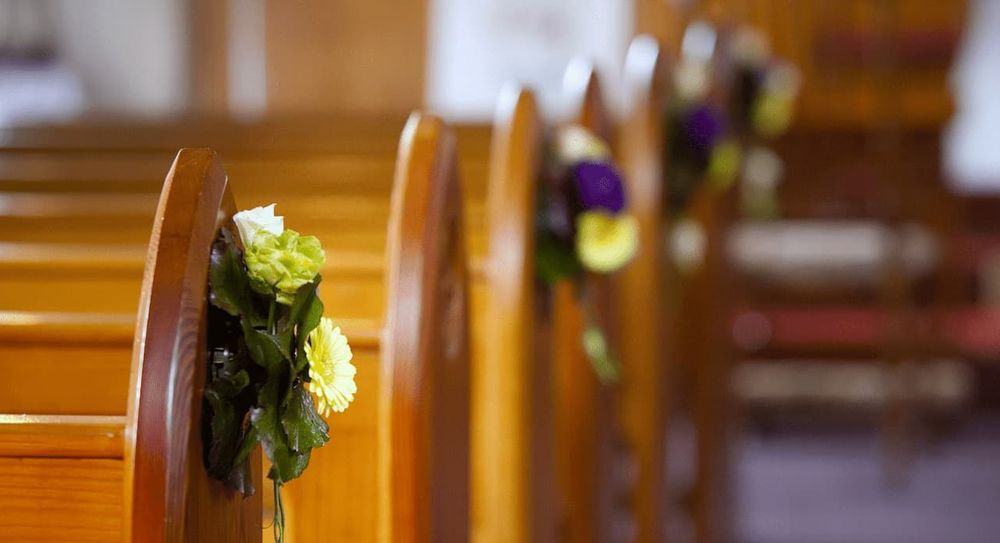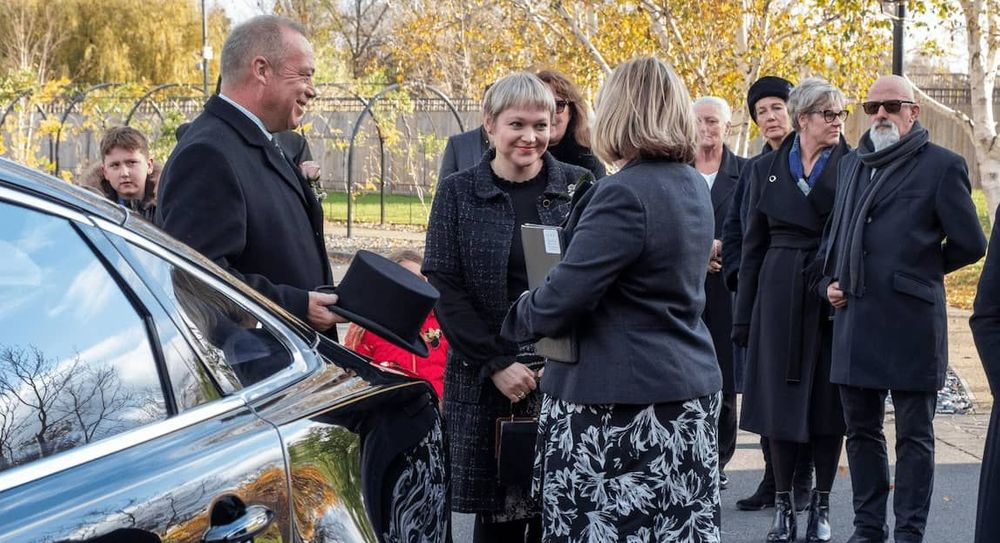Arranging a funeral can be overwhelming. You’ll have a lot of things to tick off your list. So to make things a little easier here’s a funeral glossary.
It’s a list of the most common terms you’ll come across when making funeral arrangements or settling an estate.
A | B | C | D | E | F | G | H | I | K | L | M | N | O | P | R | S | T | U | V | W
A
Aftercare – A catch-all term for the services provided by a funeral home to care for the body of the person who’s died.
Alkaline hydrolysis – Also known as water cremation. It’s a process involving heat, pressure, potassium hydroxide and water to turn the body into ashes. Compared with traditional cremation it only uses a small amount of energy.
Apportionment – When ashes are shared out so that they can be scattered and/or stored in different places. It’s also a way for different family members to keep a loved one’s ashes nearby.
Ashes – The powder-like remains of a body after being cremated.
Autopsy – A medical test carried out after death (usually by a coroner) to figure out the cause of death.
B
Beneficiary – A person who’ll receive an inheritance from somebody’s will.
Bequeath – To leave something to someone in a will.
Bequest – The thing that is bequeathed i.e. the inheritance.
Bereavement leave – This is when you take some time off work after the death of a loved one. It’ll need to be agreed with your employer.
Bereavement Support Payment – A payment from the government when your partner passes away. It used to be known as bereavement allowance.
Bier – A wooden structure where the body is placed before being buried. It can also be used to carry the coffin to its grave.
Bio-cremation – See Alkaline hydrolysis.
Burial at sea – This is when a person who’s died is taken out to sea on a boat and lowered into the water. The body can be put in a specially made coffin or ashes can be scattered.
Burial plot – A small piece of land used where a person’s remains are buried.
C
Casket – A four-sided container for storing the body of someone who’s died.
Catafalque – A wooden structure where the body is placed for display during a funeral service.
Celebrant – An official who leads a non-religious funeral service.
Celebration of life – A way for family and friends to come together and say goodbye to a loved one who has passed away. While traditional funerals may be mournful, the aim of a celebration of life is to remember the positive impact the person had when they were alive.
Cenotaph – A monument commemorating the loss of a person or people who are buried elsewhere. Cenotaphs are often built to remember those who died in a war.
Chapel of rest – A place where friends and family can go before a funeral to visit a loved one who’s died. It’s usually a room or building that’s part of a funeral home.
Chattels – A legal term used in a will that refers to someone’s belongings.
Codicil – Any updates or changes made to a will.
Coffin – A six-sided container for storing the body of someone who’s died.
Committal service – When a celebrant leads people in prayers before a coffin is lowered into the grave. This part of the burial is known as a committal because the body is being committed to the earth. Read our guide to learn more about what happens at a burial.
Columbarium – A room with a series of recesses carved into the walls designed to store urns.
Coroner – The person in charge of figuring out the cause of death in usual circumstances.
Cortège – This is a funeral procession. When the family and friends of the person who’s passed away travel from the funeral home to the service itself and then the burial location.
Cremation – The process of turning the body of the person who’s died into ashes using heat.
Crematorium – The building where a cremation takes place.
Crypt – An underground room used to store a body or several bodies often found underneath a church.
D
Death Certificate – An official document confirming a person’s death. You’ll receive a death certificate as soon as you register the death of a loved one. It’s useful to have more than one copy so that you can deal with the estate of the person who’s died.
Death notice – A public announcement of a death often appearing in a newspaper.
Digital legacy – Any info about yourself that’s online and remains even after you pass away. It can include things like social media posts, photos you’ve shared and emails you’ve sent.
Direct burial – When someone is buried without any funeral service.
Direct cremation – When someone is cremated without any funeral service.
Disbursement fees – These are third party costs that may not be covered as part of a funeral package. They are typically for burial or cremation costs, doctor’s fees, celebrant’s fees, and any maintenance fees for keeping a grave tidy. Your funeral director may manage the admin side of this for you but you’ll have to pay the fees.
Disposition – The way a person’s body is laid to rest (i.e. burial or cremation).
E
Eco-friendly burial – A form of burial which has minimal impact on the environment. Also known as a natural burial.
Eco-friendly coffins – Coffins that are made from biodegradable materials or waste materials. This is so that they decompose quicker and have less impact on the environment than a traditionally-made coffin.
Embalming – The process of preserving the body after death.
Epitaph – A short phrase describing the life of the person who died, normally found on their tombstone.
Estate – Everything belonging to the person who died. You’ll usually see this used by a solicitor when their will is read.
Eulogy – A commemorative speech given at a funeral service remembering the life of the person who’s died.
Executor – The person in charge of settling the estate normally named in the will.
Exhumation – The process of digging up a body after burial. This is usually to relocate it or in rare cases to conduct a post-mortem.
F
Funeral – A service commemorating the life of someone who’s passed away.
Funeral director – A professional who takes care of funeral arrangements. This can include storing and preparing the body, helping with transport, preparing the funeral venue and managing their team on the day.
Funeral Expenses Payment – Financial support from the government for people on benefits to help with the costs of a funeral.
Funeral home – This is a funeral director’s headquarters. It’s where their office is and where you might meet to discuss funeral arrangements.
Funeral parlour - see Funeral home.
Funeral plan – When you organise and pay for your funeral in advance. A funeral plan may not cover everything you’d like at your funeral so always check this with your funeral plan provider.
Funeral spray – An arrangement of flowers used to decorate the top of a casket or coffin.
G
Grant of probate – This is a document which confirms that the executor of a will is allowed to deal with the belongings of someone who’s died.
Grant of representation – A catch-all term that includes both grants of probate and letters of administration. Each of these documents gives someone the permission to deal with the estate of a person who’s passed away.
Grave marker – Any type of memorial (tombstone, plaque or tree) used to show where someone is buried.
Gravestone – A permanent grave marker made of stone or marble. It usually has the name and dates of birth and death of the person who died engraved on it. And it may have other information such as an epitaph.
Green certificate for burial or cremation – An official document confirming that a burial or cremation can go ahead.
Green funeral – A funeral that has as little impact on the environment as possible. Also known as an eco-friendly funeral.
Guardian – A person designated to care for children in the event of their parents’ death. This usually only applies before the child is 18 years old.
Guardian’s Allowance – Financial support offered by the government to a guardian appointed to look after someone else’s child after their death.
H
Half-couch casket or coffin – A casket or coffin divided into two sections so that the upper half of the body can be visible at the funeral service.
Headstone – See Gravestone.
Hearse – A vehicle used to transport the body after death.
Humanist funeral – A non-religious ceremony celebrating the life of a person who’s passed away.
I
Inheritance Tax – A one-off tax that applies when the value of the deceased’s estate is above the allowed threshold (£325,000).
Interment – Another word for burial.
Intestate – A term used to describe someone who has died without leaving a will.
Inurnment – The act of placing an urn containing the ashes of a loved one in its final location.
K
Keepsake – A piece of jewellery or other accessory designed to commemorate a loved one. It can contain a small amount of their ashes or a lock of their hair.
L
Lair – The Scottish term for a burial plot in a graveyard.
Letter of administration – A document which grants someone the role of executor of the estate when there’s no will.
Living will – A document outlining how a person would like to be treated if they become seriously ill and can’t make decisions for themselves.
M
Mausoleum – A building used to house bodies above ground.
Medical Certificate of Cause of Death – An official document signed by a doctor at the time of death confirming the time, date and cause. You’ll need this to register the death of a loved one. Not to be confused with a death certificate which you receive once the death has been registered.
Memorial – Any object, statue or place that’s made to remind people of someone who’s passed away.
Memorial service – Similar to a funeral service, it’s a type of ceremony where you can say goodbye to someone who’s died. But unlike a funeral the body is not usually present.
Mirror wills – Wills that closely resemble each other created by a couple. Typically one partner leaves their belongings to the surviving partner and vice versa.
Mortician – The professional in charge of preparing the body for display at a funeral.
Mortuary – The room where bodies are stored before their burial or cremation.
N
Natural burial – See Eco-friendly burial.
Natural burial grounds – Green spaces such as a woodlands, meadows or fields where people can be buried without a permanent grave marker. They’re usually privately owned so that the land and wildlife can be taken care of. The burial plots are dug by hand so that there’s less impact on the environment.
Next of kin – The closest surviving relative of the person who died.
Niche – A compartment in a mausoleum or columbarium which holds the body or the ashes of the deceased.
O
Obituary – See Death notice.
Officiant – Anyone (religious or non-religious) who leads a funeral service.
Order of service – A booklet or card that outlines everything that’s going to happen during a funeral ceremony. It’s usually given to people who attend the funeral and may also include photos of the person who’s died.
P
Pallbearers – The people (normally in a team of six or eight) who carry the casket or coffin containing the body of the person who’s died.
Post-mortem – See Autopsy.
Probate – The process of sharing out the deceased’s estate according to their will.
Public health funeral – A basic funeral that’s paid for by the local council where the person died. Previously known as a ‘pauper’s funeral’.
R
Register – A book used to record names of people who attend a funeral or funeral home.
Register office – A government office which handles the registration of death.
Resomation – See Alkaline hydrolysis.
Repatriation – The act of returning the remains of a person who’s died to his or her native country.
S
Scattering– The distribution of the ashes of the person who died after their death.
Secular – Another term for non-religious.
T
Terramation – a natural alternative to cremation. Also known as human composting. It’s not currently legal in the UK.
Tombstone – See Gravestone.
U
Unattended funeral – When a person who’s died is buried or cremated without having a funeral service. No family and friends attend. Also known as a closed funeral.
Undertaker – see Funeral Director.
Urn – A small receptacle used to store the ashes of the person who has died.
V
Viewing or visitation – When family and friends visit the body of the person who’s passed away (in a funeral home or chapel of rest) before burial or cremation.
Vigil – A Catholic service conducted the evening before the funeral.
W
Wake – A gathering of friends and family to celebrate and remember the life of the person who died, normally involving food and drink.
Water cremation – see Alkaline hydrolysis.
Will – A legal document made by the person who died before their death outlining what’ll happen to their estate.
Woodland burial – A burial that takes place in a designated woodland, usually a privately owned natural burial ground. It’s also a type of natural burial.
Hopefully our glossary of funeral terms has helped you gain a better understanding of what you need to know when arranging a funeral. If you need further support you can find a professional near you with our funeral director finder.
Photo by David Andrews at Funeral Choice.





